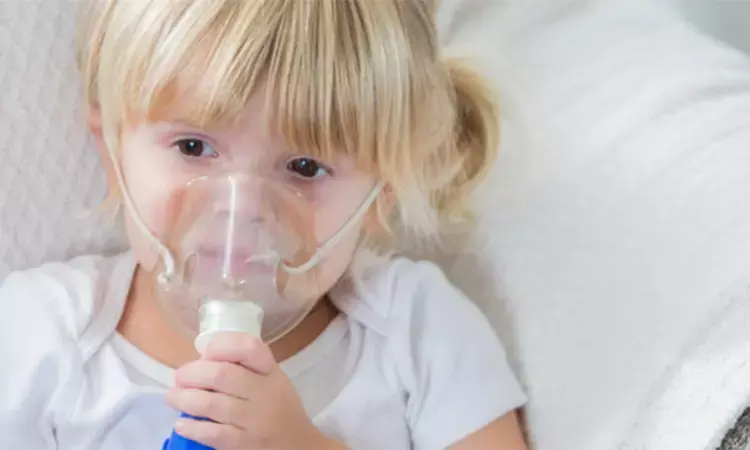- Home
- Medical news & Guidelines
- Anesthesiology
- Cardiology and CTVS
- Critical Care
- Dentistry
- Dermatology
- Diabetes and Endocrinology
- ENT
- Gastroenterology
- Medicine
- Nephrology
- Neurology
- Obstretics-Gynaecology
- Oncology
- Ophthalmology
- Orthopaedics
- Pediatrics-Neonatology
- Psychiatry
- Pulmonology
- Radiology
- Surgery
- Urology
- Laboratory Medicine
- Diet
- Nursing
- Paramedical
- Physiotherapy
- Health news
- Fact Check
- Bone Health Fact Check
- Brain Health Fact Check
- Cancer Related Fact Check
- Child Care Fact Check
- Dental and oral health fact check
- Diabetes and metabolic health fact check
- Diet and Nutrition Fact Check
- Eye and ENT Care Fact Check
- Fitness fact check
- Gut health fact check
- Heart health fact check
- Kidney health fact check
- Medical education fact check
- Men's health fact check
- Respiratory fact check
- Skin and hair care fact check
- Vaccine and Immunization fact check
- Women's health fact check
- AYUSH
- State News
- Andaman and Nicobar Islands
- Andhra Pradesh
- Arunachal Pradesh
- Assam
- Bihar
- Chandigarh
- Chattisgarh
- Dadra and Nagar Haveli
- Daman and Diu
- Delhi
- Goa
- Gujarat
- Haryana
- Himachal Pradesh
- Jammu & Kashmir
- Jharkhand
- Karnataka
- Kerala
- Ladakh
- Lakshadweep
- Madhya Pradesh
- Maharashtra
- Manipur
- Meghalaya
- Mizoram
- Nagaland
- Odisha
- Puducherry
- Punjab
- Rajasthan
- Sikkim
- Tamil Nadu
- Telangana
- Tripura
- Uttar Pradesh
- Uttrakhand
- West Bengal
- Medical Education
- Industry
Glycated Hemoglobin, A Potential Screening Tool for Cystic Fibrosis Related Diabetes

Cystic Fibrosis Related Diabetes(CFRD) is associated with an increased risk of early mortality, increasing from 40% to 75% before 30 years of age. In recent decades, the median life expectancy of patients with cystic fibrosis (CF) has increased. Although studies have shown that exocrine pancreatic insufficiency (PI) and increasing age are 2 risk factors for CFRD, 10% of patients with CF already have CFRD by 10 years of age.
In a study, researchers have reported that glycated haemoglobin (A1C) cutoffs allow early identification of children requiring further CFRD investigations, which may reduce the clinical burden of children with CF. The study findings were published in the Canadian Journal of Diabetes on March 25, 2021.
A recent study carried out by Gilmour et al, suggested a stepwise approach as a first-line screening method for CFRD in adults with CF. It was concluded that only patients with A1C levels between 5.5% and 6.4% should undertake an OGTT annually. However, it has never been tested in patients <18 years of age. Therefore, Dr Geneviève Mailhot and her team conducted a study to document the screening rate for cystic fibrosis-related diabetes (CFRD) in children followed at cystic fibrosis (CF) clinic in Canada. They further evaluated the accuracy of various glycated haemoglobin (A1C) cutoffs to screen for CFRD and impaired glucose tolerance (IGT) in a pediatric CF population.
In this validation study, the researchers calculated the CFRD screening rate over a follow-up period of up to 8 years among children who attended the CF clinic between 1993 and 2018. They compared the test performance of A1C at various thresholds ranging from 5.5% to 6.2% with the oral glucose tolerance test (OGTT) as the reference method. They included children with CF aged ≥10 years with an OGTT performed within 120 days of A1C measurement in the analysis.
Key findings of the study:
- The overall CFRD screening rate was 53.0%.
- Among 256 children, the researchers found that 8.6% had an OGTT-confirmed CFRD diagnosis.
- They noted that the A1C threshold of 5.8% demonstrates an optimal balance between sensitivity (90.9%) and specificity (60.7%) for CFRD screening, leading to a potential reduction of 56.3% of the annual required OGTTs.
- However, they noted that A1C demonstrated poor accuracy for identifying children with IGT.
The authors concluded, "An A1C threshold ≥5.8% allows for identification of children requiring further CFRD investigations, which may reduce the clinical burden of children with CF without compromising the ability of early CFRD diagnosis."
For further information:
DOI: https://doi.org/10.1016/j.jcjd.2021.03.005
Medical Dialogues Bureau consists of a team of passionate medical/scientific writers, led by doctors and healthcare researchers. Our team efforts to bring you updated and timely news about the important happenings of the medical and healthcare sector. Our editorial team can be reached at editorial@medicaldialogues.in.
Dr Kamal Kant Kohli-MBBS, DTCD- a chest specialist with more than 30 years of practice and a flair for writing clinical articles, Dr Kamal Kant Kohli joined Medical Dialogues as a Chief Editor of Medical News. Besides writing articles, as an editor, he proofreads and verifies all the medical content published on Medical Dialogues including those coming from journals, studies,medical conferences,guidelines etc. Email: drkohli@medicaldialogues.in. Contact no. 011-43720751


